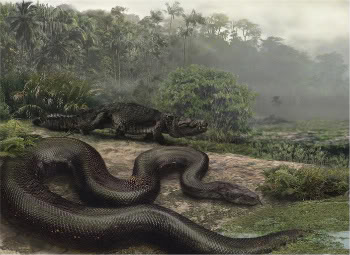

But during the filming of Titanoboa: Monster Snake, the scientists managed to uncover not just one, but fragments of three skulls, allowing them to derive for the first time what this ancient giant looked like.Ī scientifically accurate, life-sized replica of Titanoboa appears in the film and will go on display for the first time at the National Museum of Natural History beginning March 30, 2012.
#Longest screen snake ever full#
Snake skulls are almost never found as they are extremely fragile and usually disintegrate – making it almost impossible to create a full and accurate picture of these extinct creatures. Most of the fossil record of ancient snakes is comprised of vertebrae like the one that launched the Titanoboa investigation. Dominating this era was Titanoboa, the undisputed largest snake in the history of the world. The fossilized remains revealed that, after the extinction of the dinosaurs, the tropics were warmer than today and witnessed the birth of the South American rainforest, in which huge creatures battled it out to become the planet’s top predators. Together with their research teams, Jonathan Bloch of the Florida Museum of Natural History, University of Florida and Carlos Jaramillo of the Smithsonian Tropical Research Institute, joined forces with one of the world’s foremost experts in ancient snakes, Jason Head of the University of Nebraska, to unlock the mysteries of this ancient time and discover exactly how Titanoboa appeared, lived and hunted. But their most spectacular discovery was the fossilized vertebrae of a previously undiscovered species of snake, one so large it defied imagination. Fossil finds included giant turtles and crocodiles, as well as the first known bean plants and some of the earliest banana, avocado and chocolate plants.

Over the following decade, collecting expeditions led by the Smithsonian Tropical Research Institute and the Florida Museum of Natural History, University of Florida opened a unique window into perhaps the first rainforest on Earth. The story behind this significant scientific revelation began in 2002, when a Colombian student visiting the coal mine made an intriguing discovery: a fossilized leaf that hinted at an ancient rainforest from the Paleocene epoch. Eliot Elisofon Photographic Archives, African Art.Of a current number of about 2000 snake species, in fact, only about 400 species possess venom strong enough to harm humans, and even less kill them. One taipan produces over 40 grams of venom, which is 300 times more powerful than that of the rattlesnake and 20 times stronger that that of the Indian cobra. The most venomous land snake is the so called infamous taipan (Parademansia microlepidotus) (photo 4) from Australia, which reaches 2 m (7 feet) length and is related to the cobras. Interestingly, there is no victim reported to have been killed by any sea snake, as with all their powerful venom, are very difficult to provoke. The most powerful venom was found to be that belonging to the sea snakes from the Hydrophis genus, related to the cobra. It can reach 5.5 m (17 feet) length (photo 3).īut king cobras are slender, they usually do not exceed 20 kg (44 pounds), that's why other venomous snakes like the bushmaster (Lachesis muta) from northern South America, which is a pit viper (thus, related to rattle snakes), even if reaching 3.65 m (11 feet), overcome the king cobra in weight.

These are snake "giants", but the smallest snake is the Vieille's blind snake (Rhinoleptus koniagui) from West Africa: it reaches just 10 cm (4 inch) (photo 2)!Īll the previous snakes do not possess venom they kill by the power of their grip.īut the longest venomous snake is king cobra (Ophiophagus hannah) from southern and southeast Asia. The reticulated python (P reticulatus) from the same area can be even a little longer, till 9,15 m (28 feet) but is slimmer than the tiger python, with 145 kg (363 pounds) at this weight. The tiger pythons (Python molurus) from southeastern Asia almost equals anacondas: they are confirmed to reach 8.22 m (25 feet) but are slightly "slimmer" than anacondas: 182 kg (455 pounds). Anaconda is a type of huge aquatic boa snake and can swallow even pigs and caymans (a type of alligators). Some say it could reach 11 m (33 feet), but this has not been proven yet. The largest individuals can reach 9 m (27 feet) and 220 kg (550 pounds). The biggest current snake is green anaconda (Eunectes murinus) (photo 1) from northern South America. This snake reached 11 m (33 feet) in length, was related to pythons and boa, and could eat animals the size of a wild boar. The largest snake that ever existed is Gigantophis garstini, which lived from 40 million years ago till as recently as 40,000 years in North Africa.


 0 kommentar(er)
0 kommentar(er)
